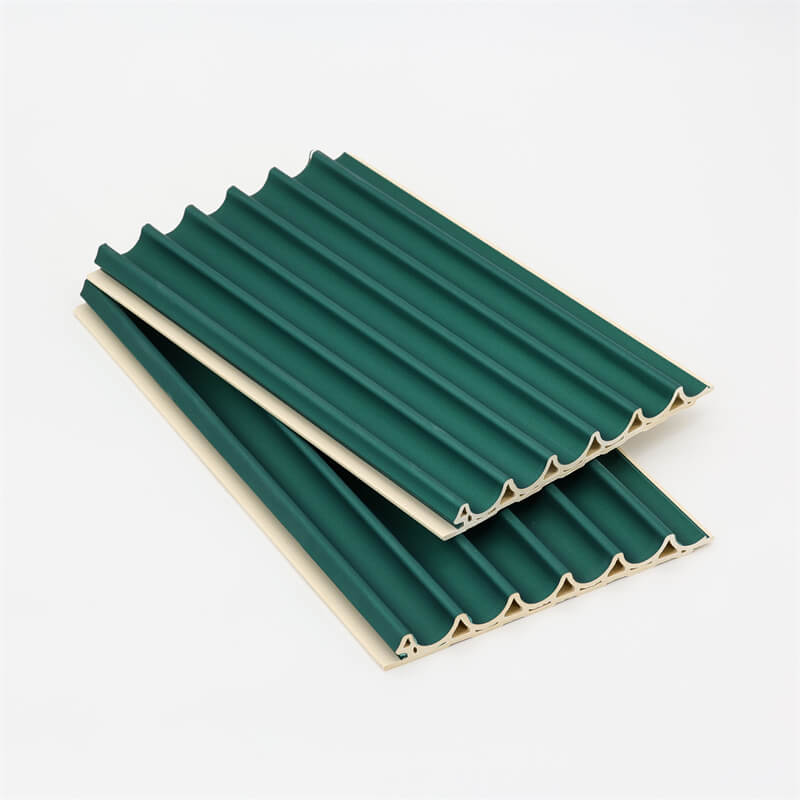
When it comes to construction and design, the ability to withstand environmental challenges is of paramount importance.
Buildings and structures must endure the elements, including rain, snow, sunlight, and temperature fluctuations, without compromising their integrity and aesthetics.
Wood-Plastic Composite (WPC) panels have emerged as a durable and weather-resistant solution for such challenges.
In this article, we explore how WPC panels effectively weather the elements, providing long-lasting and sustainable solutions for various applications.
By understanding the factors that make WPC panels resilient, designers and builders can create structures that thrive in diverse environmental conditions.
Moisture Resistance: Defying Water’s Destructive Effects
A Barrier against Water Absorption One of the primary reasons WPC panels excel in resisting environmental challenges is their inherent moisture resistance.
The blend of wood fibers and thermoplastic polymers creates a composite material that acts as a barrier against water absorption.
Unlike traditional wood, which readily absorbs water and leads to issues like warping, swelling, and decay, WPC panels remain structurally stable and visually appealing even in wet conditions.
This moisture resistance makes WPC panels an ideal choice for outdoor applications, such as decking, cladding, and fencing, where exposure to rain and humidity is constant.
Resisting Mold and Mildew Moisture can create an ideal environment for mold and mildew growth, which not only compromises the appearance of surfaces but also poses health hazards.
WPC panels’ moisture resistance prevents mold and mildew from thriving on the material, ensuring that the composite remains clean, safe, and visually pleasing.
This characteristic is particularly valuable for applications in damp and humid climates.

UV Resistance: Enduring Sunlight’s Fading Effects
Protection against UV Rays Exposure to sunlight can cause fading and discoloration in materials over time.
WPC panels are designed with UV inhibitors that protect the composite material from the harmful effects of ultraviolet (UV) rays.
This UV resistance ensures that WPC panels retain their original color and appearance, even after extended exposure to sunlight.
It makes WPC panels suitable for outdoor use, where constant exposure to the sun is a concern.
Maintaining Aesthetics in Sunny Climates In regions with high sun exposure, materials may suffer from discoloration and deterioration, leading to a compromised appearance and reduced longevity.
WPC panels’ ability to resist UV rays enables them to withstand the challenges posed by intense sunlight, ensuring that structures maintain their aesthetics and integrity over the years.
Temperature Resistance: Thriving in Extreme Conditions
Thermal Stability Temperature fluctuations can cause materials to expand and contract, leading to structural instability and potential damage.
WPC panels exhibit thermal stability, meaning they are less prone to expansion and contraction due to temperature changes.
This characteristic ensures that WPC panels remain dimensionally stable and structurally sound, even in regions with extreme temperature variations.
Freeze-Thaw Durability In cold climates, the freeze-thaw cycle can pose significant challenges to building materials.
The repeated freezing and thawing of moisture can cause materials to crack and deteriorate.
WPC panels’ resistance to water absorption and enhanced dimensional stability make them well-suited for applications in areas prone to freeze-thaw conditions.

Resistance to Corrosion and Environmental Stress
Corrosion Resistance In certain environments, such as coastal regions with high salt content in the air, materials can be vulnerable to corrosion.
WPC panels’ resistance to corrosion ensures their longevity in such conditions, making them suitable for coastal applications and regions with high humidity.
Withstanding Environmental Stress Overall, the combination of moisture resistance, UV resistance, temperature resistance, and corrosion resistance makes WPC panels highly resilient to environmental stress.
Their ability to endure diverse challenges allows them to thrive in various climates and applications, from urban structures to rural landscapes.
Wood-Plastic Composite (WPC) panels exemplify the spirit of weathering the elements with remarkable resilience and durability.
Their moisture resistance protects against water-related issues, such as swelling and decay, while their UV resistance maintains the original color and appearance, even in intense sunlight.
Temperature resistance ensures dimensional stability, while corrosion resistance equips them for challenging environments.
WPC panels are designed to withstand environmental stress, making them a reliable and sustainable choice for a wide range of construction and design projects.
As the demand for materials that can endure the elements increases, WPC panels stand as a testament to innovation and sustainable design.
By integrating the exceptional properties of wood fibers with thermoplastic polymers, WPC panels offer long-lasting solutions that thrive in diverse climates and applications.
From decking and cladding to fencing and interior design, WPC panels provide a versatile and durable option that can weather the elements and preserve the aesthetics and integrity of structures for years to come.
Embrace the resilience of WPC panels in your next construction and design endeavors, and design with confidence knowing that your creations will withstand the challenges of time and the environment.
